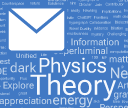Last weekend I gave a speech at this year’s graduation event for the Stanford Online High School (OHS) that one of my children has been attending. Here’s the transcript:
Thank you for inviting me to be part of this celebration today—and congratulations to this year’s OHS graduates.
You know, as it happens, I myself never officially graduated from high school, and this is actually the first high school graduation I’ve ever been to.
It’s been fun over the past three years—from a suitable parental distance of course—to see my daughter’s experiences at OHS. One day I’m sure everyone will know about online high schools—but you’ll be able to say, “Yes, I was there when that way of doing such-and-such a thing was first invented—at OHS.”
It’s great to see the OHS community—and to see so many long-term connections being formed independent of geography. And it’s also wonderful to see students with such a remarkable diversity of unique stories.
Of course, for the graduates here today, this is the beginning of a new chapter in their stories.
I suspect some of you already have very definite life plans. Many are still exploring. It’s worth remembering that there’s no “one right answer” to life. Different people are amazingly different in what they’ll consider an “‘A’ in life”. I think the first challenge is always to understand what you really like. Then you’ve got to know what’s out there to do in the world. And then you’ve got to solve the puzzle of fitting the two together. Continue reading









